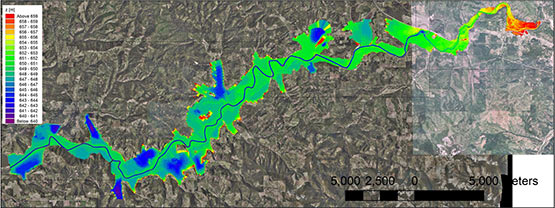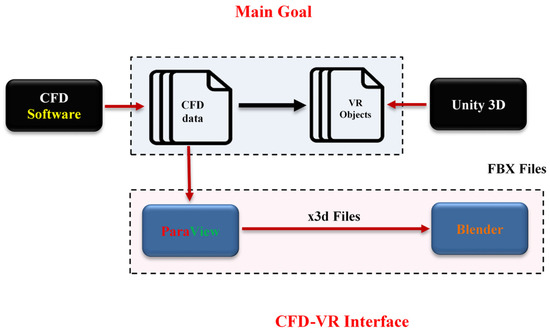

The results also demonstrate the effect of freshwater river inputs and wind on the travel time of the neutrally buoyant particles within the estuarine system. In contrast, particles released within the Caloosahatchee River were flushed into the Gulf of Mexico within 10 days during a usually wet El Niñno, dry (November–April) season period whereas during the summer wet (May–October) season released particles remained in the estuary for a longer period (13 days), ultimately resulting in their further transport into Pine Island Sound and Matlacha Pass. A Lagrangian particle tracking study revealed particles released within the Peace River during different hydrological conditions were comparably transported regardless of freshwater inputs and predominate wind direction.

The similarities and/or contradictions of these results in comparison to former field and modeling results are mainly attributed to the differences between the freshwater sources and environmental forces corresponding to each study that forces a different mass-balance condition over the estuary-bay system and, thereby, at each individual inlet. Boca Grande Pass and Big Carlos Pass were mostly ebb dominant, whereas San Carlos Bay was largely flood dominant neither phase dominated at Captiva Pass. Neither the flood nor ebb phase exhibits uniform dominance in flushing the system’s four major passes. The unnatural freshwater releases have been found to negatively affect the system’s ecology, in particular within the Caloosahatchee River portion of the system. Fresh water entering the system not only varies seasonally but also, because of regulatory fresh water, releases controlling water levels within an upstream lake. Propeller wash project.A hydrodynamic model was developed and validated for the Charlotte Harbor estuarine system, located in SW Florida, to elucidate freshwater fluxes within the system’s various inlets during diverse hydrologic conditions.We then applied the results as boundary conditions for a CFD model, that resolved details of the flow over the weir (See figure 1) This model simulated non- linear details of the wave run-up and breaking waves near the structure We applied Mike 21 BW to the far field region and used its results as boundary conditions for a CFD model. Simulation of wave run-up on wind turbine foundations.An ecological model simulated the impact of the additional aeration of jets on the water quality We applied the results from detailed CFD studies of mixing capability of jets in a Mike 11 model of the complete channel. Punggol Environmental Impact Assessment (EIA) study, Singapore – an EIA study of the Punggol channel.We have previously conducted such simulations in several projects, including: However, it cannot resolve the detailed flow and loading on structures as well as CFD models can.Ĭombining CFD and MIKE by DHI models will allow for comprehensive load/response studies of complex structures. This type of model is much faster than a CFD solver. A MIKE 21 model yielded the upstream boundary conditions and the CFD model was used to simulate the weir discharge capacityįig 2: CFD model simulation results showing the flow field and bottom shear stress around a moving vesselĭepth-integrated 2D models have been applied for many years with great success in design assessment of coastal and offshore structures. From a practical point of view, CFD simulation must be limited to an inner region surrounding the structure.įig 1: Illustration of labyrinth Weir model. However, this type of simulation has high computational demands. A non-linear Navier-Stokes CFD solver is often required to resolve the detailed response of for instance, viscous effect. 2D hydrodynamic modeling was created with MIKE powered by DHI software MIKE 11 and MIKE 21. In order to achieve a safe, yet cost-effective foundation for nearshore and offshore structures, it is imperative to predict load and response of the structures in detail. Our experience in several commercial and research projects will be useful for the development of the methodologies and tools. Near field simulations will be based on a Computational Fluid Dynamics (CFD) solver. Far field simulation will be based on integrated two dimensional (2D) and three dimensional (3D) models (MIKE 21 and MIKE3 respectively). DHI Singapore launched a research project to develop rapid and ‘easy-to-use’ methods for load and response simulation of complex nearshore and offshore structures.


 0 kommentar(er)
0 kommentar(er)
